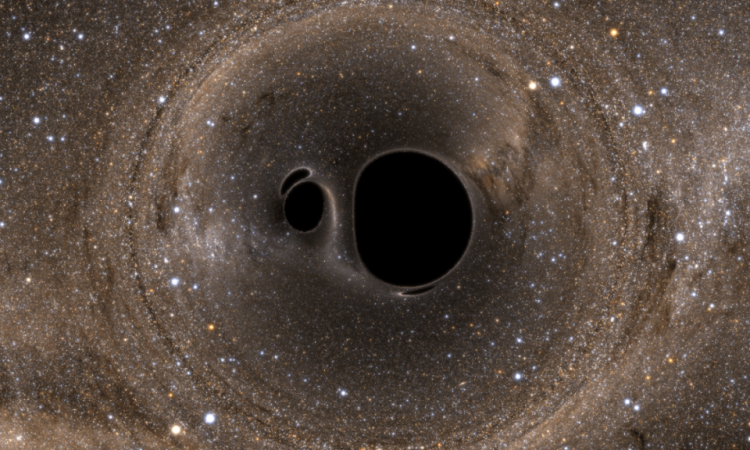
A binary black hole system has shown precession caused by gravitational forces so strong they are dragging spacetime
In February 2016, scientists at the Laser Interferometer Gravitational-Wave Observatory (LIGO) announced the first-ever detection of gravitational waves (GWs). Originally predicted by Einstein, these waves are ripples in spacetime that occur whenever massive objects (such as black holes and neutron stars) merge. Since then, countless GW events have been detected by observers around the world, to the point that they have become an almost daily occurrence. This has allowed astronomers to gain insight into some of the most extreme objects in the Universe.
Advertisement
In a recent study, an international team of researchers led by Cardiff University observed a binary black hole system originally detected in 2020 by the LIGO, Virgo and KAGRA observatories. During the process, the team noticed a particular twisting movement (i.e. a precession) in the orbits of the two colliding black holes which was 10 billion times faster than observed with other precessing objects. This is the first time that a precession has been observed with and which confirmed yet another phenomenon predicted by General Relativity.
A tangle of spacetime
Binary black holes (BBHs) are considered a prime candidate for gravitational wave research as astronomers expect many of them to be precessing. In this scenario, black holes revolve around each other in ever-tightening orbitsbreeding stronger and stronger until they unite. So far, no definitive evidence of orbital precession has been observed from the 84 BBH systems detected by LIGO and Virgo. But the team noticed something different when examining the GW200129 event detected during its third operational cycle (O3).
One of the black holes in this system (~40 solar masses) it is considered the fastest rotating ever detected through gravitational waves. Unlike all previous observations of BBH, the rapid rotation of the system it has such a profound effect on spacetime that the entire system oscillates back and forth. This form of precession is known as Frame Dragging (also called “Lense-Thirring effect”), a consequence of General Relativity in which gravitational forces are so strong that they “drag” with them the very fabric of spacetime, creating real “nodes”.
A similar phenomenon is observed by observing the orbit of , which periodically precedes it as it orbits around the Sun. In practice, Mercury’s path around the Sun is very eccentric and even the most distant point of its orbit (perihelion) moves over time, rotating around the Sun like a top. In general relativity, precession is usually such a weak effect as to be almost imperceptible. Gravitational waves are extremely weak and to detect them requires the most sensitive measuring apparatus in history. Precession is an even weaker effect buried within an already weak signaltherefore very precise analyzes are needed to recognize it.
A confirmation of the precession
Previously, the best-known example was a binary pulsar that took over 75 years to complete its orbit. In this case, the pair of black holes known as GW200129 (observed on January 29, 2020) completed it multiple times per second, an effect 10 billion times stronger than the binary pulsar. Even so, confirming that the black holes in this system were precessing was a significant challenge.
These results confirm that before the of black holes – the most extreme gravitational event ever observed by astronomers – Binary black holes can experience orbital precession. It is also the latest in a long line of examples demonstrating how gravitational wave astronomy allows astronomers to probe the laws of physics under the most extreme conditions imaginable. With a network consisting of Advanced LIGO, Virgo and KAGRA detectors in the United States, Europe and Japan, it is also one of the most active fields of astronomical research.
This network is currently being upgraded to improve its sensitivity to events and will begin its fourth round of observations (O4) in 2023. When this happens, it is hoped that several hundred black hole collisions will be detected and added to the catalog. This will allow astronomers to gain more information about the most extreme gravitational phenomenon in the Universe and let them know whether GW200129 was an outlier or whether such extreme events they are a common occurrence.
Read more:

